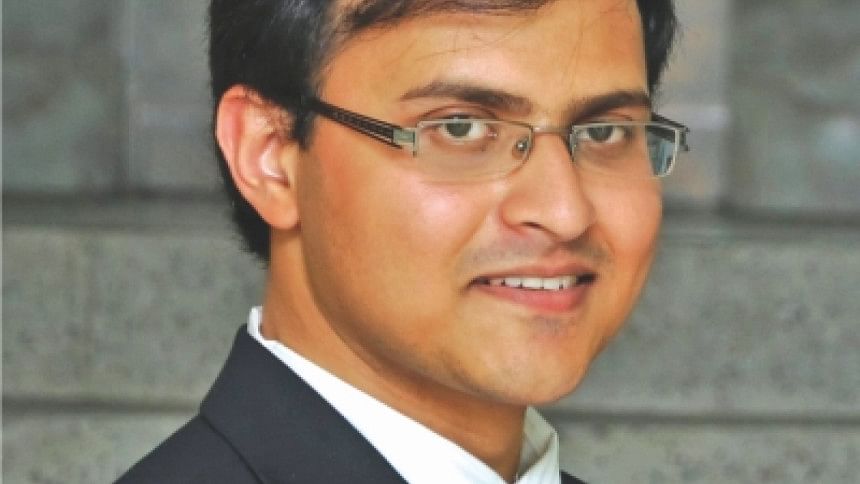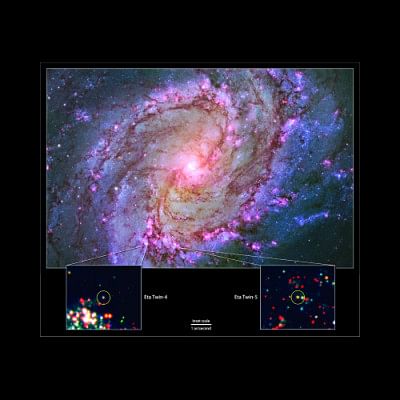Another Feather in the Cap

This year we can proudly say that Bangladesh has reached the stars.
No, we are not reiterating any clichéd idiom; a young Bangladeshi astrophysicist has actually made it true for us. Don't believe us? You can check out NASA's website to learn more about the man who has brought us this great news.
A team led by 29 year old Rubab Khan, a Bangladeshi astrophysicist of Nasa Goddard Space Flight Centre, has made a significant contribution toward improving our understanding of how the most massive stars in the local universe live, age and die, while the broader role that these stellar behemoths play in the universe.
According to Khan, they have discovered five potential twins of "Eta Carinae", a supermassive star in other galaxies, using data from NASA's Spitzer and Hubble Space telescopes.
"In our galaxy, Eta Carinae contains one of the most massive stars which is equivalent to the mass of 100-150 suns," informs Khan via email. "
"Eta Carinae had a "Giant Eruption" in the 1840's that made an enormous amount of material outburst that is about 20 times the mass of the Sun. This ejected material is now found in the form of an hourglass shaped veil of gas and dust around the star. Now we have discovered that Eta Carinae is no longer the only anomaly, rather there are five twins of the system in other galaxies."
Khan believes this discovery would help the world of astronomy solve a number of mysteries about massive stars. "Previously, there were no known analogs, making it impossible to determine if Eta Carinae's eruption was a one-off event triggered by some highly unusual local conditions, or if it were something that happens to all super-massive stars as they grow old," he says.
Rubab's stargazing adventure started long before he owned an actual telescope. He grew up listening to his mother's stories about how clear the night sky of Dhaka used to be during her childhood.
For Rubab, load-shedding was a blessing in disguise. Because, every time the power went out, he would inevitably be found on the rooftop gazing at the starry sky.
"Fortunately, I lived in the Dhaka University campus throughout my childhood, where watching the sky was easier than probably most other places in the city," he says.
Over time, he started reading as much as he could about astrophysics: be it an article by Dr. Abdullah Al Muti in the newspapers, or the few Bangla books on astronomy that were available in the market. M Zafar Iqbal, veteran science fiction writer, has been his biggest inspiration, says Khan.
"His science fictions and stories about his own life as a scientist inspired me to pursue astrophysics professionally," he says.

When he was in school he used to take part in workshops and seminars organized by the Bangladesh Astronomical Association. After finishing his Higher Secondary Certificate, he received a scholarship from Columbia University, which made everything that followed possible. Being a research university, Columbia University made Rubab engage in extensive research in the initial years of his stay there.
"Because of this, by the time I finished my undergraduate studies there, I was already working with a major research project called "LIGO" for four years, which aims to detect gravitational wave signals from astrophysical objects. This prepared me very well to pursue further research in graduate school at the Ohio State University," he informs.
As soon as he reached Ohio State, he had to work on a wide range of projects in the first 2-3 years, before he decided to work on massive stars.
Of everything, why massive star geriatrics?
Khan always wanted to work on something where he could have the opportunity to make an original contribution that was not being pursued by anyone else.
"There was also a science aspect to this decision: massive stars play a very crucial role in nature," he explains. "They synthesize the key elements of nature that form planets, they drive galaxy evolution, and they produce some of the highest energy explosions in the universe when they die as core-collapse supernova. I found it fascinating that this one sub-specialty of Astrophysics is so critical to understand so many other aspects of nature."
Other than this tremendous discovery, Khan's PhD thesis has one more interesting aspect. Unlike most students, who dedicate their thesis to their family, Khan has dedicated it to Bangladesh.
"I was educated in Bangladesh first," Khan says. "Anything and everything I achieved later was built on that. Our country, our language, our culture made me who I am. I wanted to dedicate my PhD thesis to the single most important factor in my life, and that was my country," says the achiever, pride evident in his words.

 For all latest news, follow The Daily Star's Google News channel.
For all latest news, follow The Daily Star's Google News channel. 



Comments